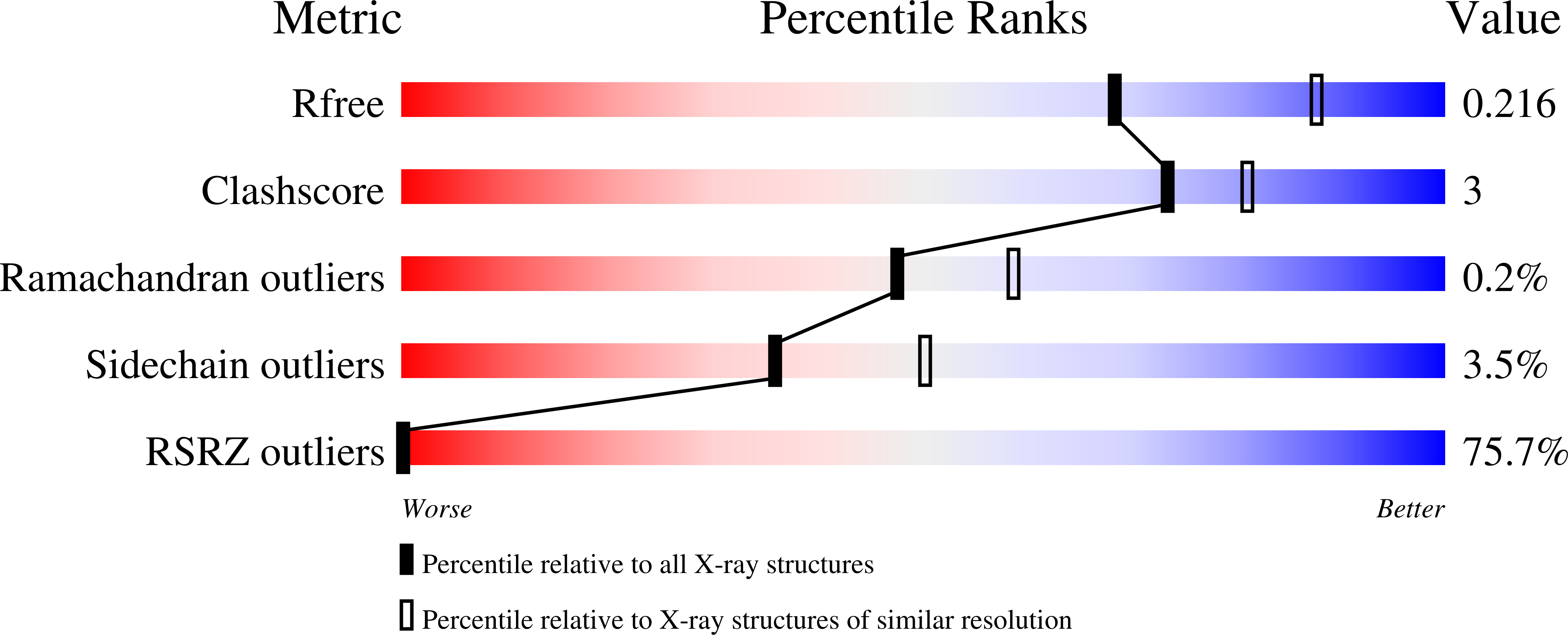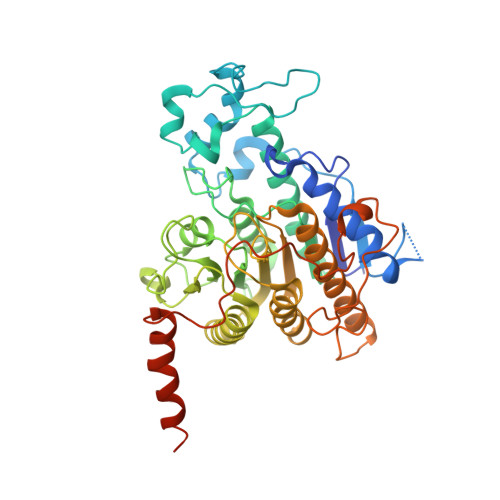Species-selective targeting of pathogens revealed by the atypical structure and active site of Trypanosoma cruzi histone deacetylase DAC2.
Marek, M., Ramos-Morales, E., Picchi-Constante, G.F.A., Bayer, T., Norstrom, C., Herp, D., Sales-Junior, P.A., Guerra-Slompo, E.P., Hausmann, K., Chakrabarti, A., Shaik, T.B., Merz, A., Troesch, E., Schmidtkunz, K., Goldenberg, S., Pierce, R.J., Mourao, M.M., Jung, M., Schultz, J., Sippl, W., Zanchin, N.I.T., Romier, C.(2021) Cell Rep 37: 110129-110129
- PubMed: 34936867
- DOI: https://doi.org/10.1016/j.celrep.2021.110129
- Primary Citation of Related Structures:
7Q1B, 7Q1C - PubMed Abstract:
Writing and erasing of posttranslational modifications are crucial to phenotypic plasticity and antigenic variation of eukaryotic pathogens. Targeting pathogens' modification machineries, thus, represents a valid approach to fighting parasitic diseases. However, identification of parasitic targets and the development of selective anti-parasitic drugs still represent major bottlenecks. Here, we show that the zinc-dependent histone deacetylases (HDACs) of the protozoan parasite Trypanosoma cruzi are key regulators that have significantly diverged from their human counterparts. Depletion of T. cruzi class I HDACs tcDAC1 and tcDAC2 compromises cell-cycle progression and division, leading to cell death. Notably, tcDAC2 displays a deacetylase activity essential to the parasite and shows major structural differences with human HDACs. Specifically, tcDAC2 harbors a modular active site with a unique subpocket targeted by inhibitors showing substantial anti-parasitic effects in cellulo and in vivo. Thus, the targeting of the many atypical HDACs in pathogens can enable anti-parasitic selective chemical impairment.
Organizational Affiliation:
Université de Strasbourg, CNRS, INSERM, Institut de Génétique et de Biologie Moléculaire et Cellulaire, UMR 7104, U 1258, 67404 Illkirch, France; IGBMC, Department of Integrated Structural Biology, 1 rue Laurent Fries, B.P. 10142, 67404 Illkirch Cedex, France.

















